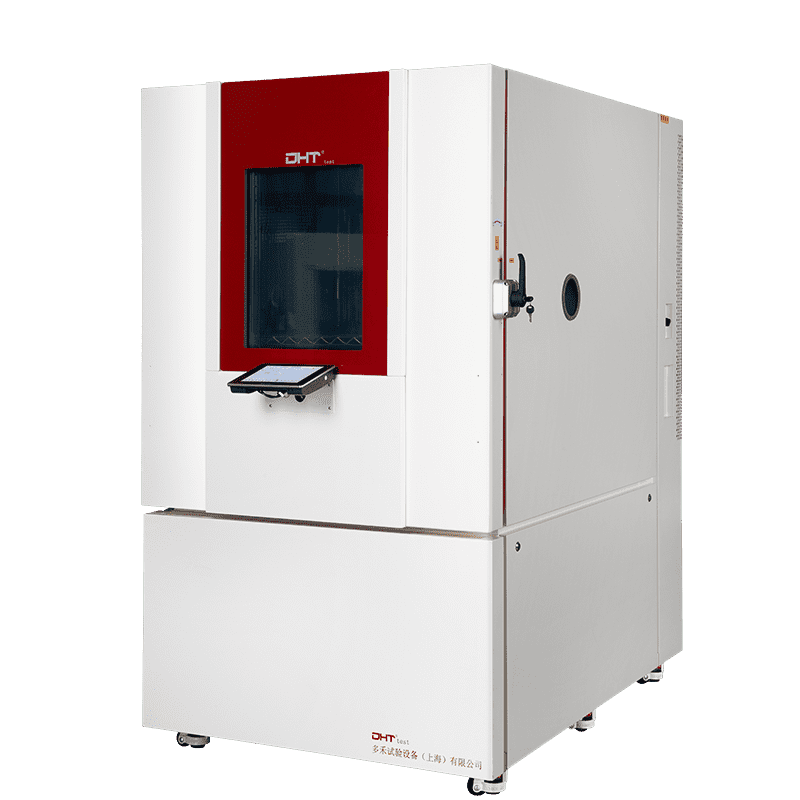Written by Shirley
Product Manager, Doaho Test (DHT®)
What Is a Thermal Shock Chamber and Why Is It Crucial for Your Business?
A thermal shock chamber is a specialized testing device designed to simulate how products perform under rapid and extreme temperature changes. By swiftly cycling between extremely cold and hot environments, it evaluates how materials and structures withstand thermal expansion and contraction, helping to identify potential risks such as cracking, deformation, or functional failures.
In today’s fiercely competitive market, product reliability and durability are key factors in gaining customer trust and maintaining brand reputation. Selecting a thermal shock chamber that precisely matches your testing requirements not only helps uncover product weaknesses early and reduce subsequent failures but also significantly shortens development cycles and lowers after-sales costs, making it an indispensable tool in your company’s quality assurance system.
Defining Your Testing Objectives: What Exactly Do You Need to Test?
Different products and industries have diverse demands for thermal shock testing, and your testing goals directly determine the technical specifications required for your thermal shock chamber.
-
Electronic Components: For items like smartphone chips or sensors, the focus is on how rapid temperature changes affect solder joints and component stability, requiring extremely fast temperature transition rates and precise control.
-
Automotive Parts: Components such as engine control modules demand equipment that supports large sample volumes and extended high-cycle testing, while complying with automotive industry standards.
-
Aerospace Materials: Composite materials and metals exposed to extreme thermal cycling require high-precision temperature control and a stable, uniform test environment.
-
Pharmaceutical Packaging: Sensitive to sealing integrity and material aging, these require thermal shock testing under combined temperature and humidity conditions.
Understanding your specific test objectives is the first critical step to ensure equipment parameters align perfectly with your goals, thereby avoiding invalid tests or costly re-investments.
Key Technical Specifications: The Core Standards That Define Performance
When choosing a thermal shock chamber, the following technical indicators are essential criteria for evaluating equipment quality:
-
Temperature Range: Most thermal shock chambers cover -70°C to +180°C, with some high-end models extending down to -90°C or lower. Selection should be based on relevant test standards and material tolerances to ensure practical applicability.
-
Temperature Transition Rate: This refers to how quickly the chamber switches between high and low temperatures, commonly ranging from 5°C to 15°C per minute. Faster rates require superior compressor performance and insulation design, directly affecting testing efficiency and result accuracy.
-
Temperature Stability and Uniformity: Temperature fluctuations must be tightly controlled within ±0.5°C, and uniformity maintained within ±2°C. These parameters are vital for reliable and repeatable test results.
-
Chamber Design: Choose between single, dual, or multi-chamber structures according to testing needs. Chamber volume must match sample sizes. Quality units use corrosion-resistant stainless steel to enhance durability and safety.
-
Intelligent Control System: Advanced controllers supporting multi-step programming and accurate data acquisition simplify complex test procedures, ensuring ease of use and data integrity.
Common Pitfalls in Selection: Have You Fallen into These Traps?
-
Blindly Favoring Imported Brands While Overlooking Standard Compatibility Many assume international brands are inherently superior and overly favor imported equipment. The core risk here is neglecting whether the equipment precisely matches your country’s, industry’s, or product’s standards (e.g., GB, ASTM, IEC, MIL). If the imported chamber isn’t optimized for your specific standards, test results may be invalid, unrecognized, or pose compliance risks — rendering the costly investment ineffective. Selection should prioritize technical parameter alignment over brand prestige.
-
Buying the Most Expensive Instead of the Most Suitable Focusing solely on price extremes or pursuing unnecessarily high-end models can lead to wasted resources on redundant features. Make purchasing decisions based on actual test needs such as temperature range, transition time, and load capacity to strike the best balance between performance and cost.
-
Chasing Maximum Capacity While Ignoring Efficiency Oversized chambers increase temperature ramp-up/down times, energy consumption, and footprint, reducing testing throughput per unit time. Determine chamber volume based on typical test loads, and pay attention to temperature change rates and uniformity at those loads.
-
Neglecting Maintenance and Upgrade Potential Failure to consider ease of maintenance or future expansion leads to costly downtime and inflexibility. Lack of local technical support or spare parts availability results in prolonged outages. Similarly, chambers that cannot be upgraded via modular components or software updates become obsolete when test requirements evolve. Assess suppliers’ local service capabilities, spare parts logistics, and technical upgrade options thoroughly before purchasing.
-
Ignoring Ease of Operation Complex user interfaces, cumbersome operation, or absence of safety interlocks negatively impact daily test efficiency and increase training overhead and human error risks. Opt for equipment with user-friendly, intuitive controls and comprehensive safety features to enhance user experience and operational reliability.
-
Overlooking After-Sales Service Not evaluating the supplier’s after-sales service network, response time, technical support expertise, spare parts availability, and calibration services can lead to equipment downtime and testing interruptions. Choose suppliers with proven service commitment to ensure uninterrupted operations over the equipment’s lifespan.
Step-by-Step Selection Checklist: Guiding You to Your Ideal Thermal Shock Chamber
-
Define your testing objectives and standards (temperature range, transition rate, cycle count, etc.)
-
Estimate sample volume and quantity to determine chamber size
-
Compare temperature control accuracy, transition speed, and control system features
-
Consider energy consumption, maintenance costs, and after-sales support
-
Confirm if the manufacturer supports sample testing, technical consultation, and customization
-
Conduct on-site performance inspections, verify ease of operation and data interface compatibility
-
Evaluate overall quotations and technical support before final purchase decision
Conclusion: Precise Selection Fuels Product Quality and R&D Efficiency
Selecting the right thermal shock chamber is a crucial step in building a reliable R&D and quality assurance system, impacting the entire product lifecycle. Accurately identifying core needs, thoroughly understanding technical specifications, and successfully avoiding selection pitfalls will significantly improve testing efficiency and data credibility, providing solid support for product quality and development progress.
If you need expert selection guidance or customized thermal shock testing solutions, the DHT® team is ready to assist. With deep industry expertise and leading-edge technology, we aim to be your trusted partner—helping you overcome testing challenges and accelerate your product development and time-to-market.


